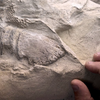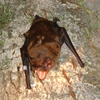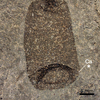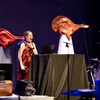Artemis Program Update Blog #1: NASA Announces Artemis II Crew

The recently announced Artemis II crew.
On November 16 last year, at 1:47 AM, Artemis I’s rocket assembly blasted off from Merritt Island, Florida, on its way to our nearest cosmic neighbor, the Moon. The uncrewed mission’s primary goal was to assess the Orion spacecraft’s heat shield upon atmospheric reentry, a test the capsule passed with flying colors after its splashdown 25 days later. The mission was a certified success, but only the first step for the Artemis Program’s ambitious plans. Artemis II will send a crewed mission to lunar orbit, followed by Artemis III, IV, and V landing on the Moon, with the intention of eventually building a permanent settlement on the surface.
The program has a long timetable, one that is likely to expand, with Artemis II, III, IV, and V currently slotted for 2024, 2025, 2028, and 2029, respectively. These will be the first Moon missions since Apollo 17 in 1972, an absence of five decades that will soon come to an end. To chronicle this return to the Moon, Mini Museum is excited to bring you the Artemis Program Blog which will share updates and stories from Artemis as they roll out.

Artemis II mission map.
This past Monday on April 3, NASA announced the crew members for Artemis II: Mission Commander Reid Wiseman, Pilot Victor Glover, and Mission Specialists Jeremy Hansen and Christina Hammock Koch. Glover will be the first person of color on such a mission, Koch the first woman, and Hansen the first Canadian, as part of NASA’s collaboration with the Canadian Space Agency. The four are slotted to blast off from the Kennedy Space Center in November of next year–during their mission the astronauts will assess life support and other functions aboard the Orion in preparation for Artemis III’s landing on the Moon.
The announcement of the Artemis II crew follows other exciting updates from the program–last month, NASA unveiled a new generation of spacesuits to be worn during Artemis III, designed by Axiom Space, one of the agency's private sector collaborators. Unfortunately, it has not been all good news coming out of Artemis–NASA Inspector General Paul K. Martin recently testified to a Congressional house subcommittee that testing the suit and other equipment will probably push Artemis III’s launch date into 2026, a year later than planned. With other delays already having hindered Artemis I, concern is growing over the launch schedule for the other missions.
When exactly the Artemis missions will launch remains fluid, but its goals remain concrete: a return to the Moon, laying the groundwork for a permanent base on its surface. As the program anticipates staggering hurdles and moments of triumph, Mini Museum hopes to be your guide to humanity’s return to the lunar surface. Check back here to learn more about the Artemis Program.
Featured Product
Joe Frazier Boxing Glove
Cool Things!

Is “Paul is Dead” Dead?: Unpacking One Of Pop Culture’s Most Enduring Conspiracy Theories

Scientists Discover Hooves and Skin in Preserved Dinosaur "Mummies!"
A dinosaur discovery just in time for Halloween! In a new analysis of a group of fossils from Wyoming, Scientists have determined this group of fossils are dinosaur “mummies,” with preserved skin and even hooves.

Scientists Record a Bat Catching Birds Mid-Flight!
Bats, birds, screeches, oh my! In a reverse-Hitchcock twist, a new study reveals that a species of European bat catches and eats birds mid-flight.
Specimen Deep Dives

The House that Ruth Built: The Story of the Old Yankee Stadium

The Queen of the Skies: the Story of the Boeing 747

Old Ironsides: The USS Constitution and the Start of the U.S. Navy
Long Form Articles

The Artist Behind the Macintosh: Susan Kare and Apple Computers
While the two Steves, Jobs and Wozniak, are the most well known faces behind Apple computers, equally important to the products and culture of the company were those who crafted the experience of using their computers through design. The most notable of these visual architects was Susan Kare, a designer responsible for “humanizing” Macintosh computers.

Can I Lick It? Yes You Can!
Have you ever been unable to tell if a fossil was really a fossil, but you were too embarrassed to admit it? Have you ever wanted to lick a fossil just because, but you didn’t want to risk judgment from your peers? Well, good news! You can kill two birds with one stone! Licking a fossil can actually help you determine if it’s the real deal or just another rock.

Is It Legal To Own a Meteorite: How to Start Your Outer Space Collection!
Meteorites are some of the rarest geological specimens to be found on Earth. Of course, since these stones are not of our world, purchasing them can sometimes be a confusing process. Is it legal to own a meteorite? In short, yes! Read on for help starting your cosmic collection!


















